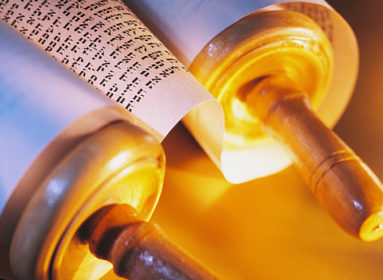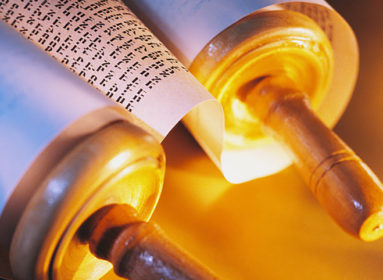By Shlomo Riskin
This week’s reading of Naso describes the “sota,” the woman who acts immodestly. At the very least, she sequesters herself alone with a man despite the fact that her husband warned her against seeing that person. She therefore undergoes the test of the bitter waters. However, during the spring holiday period, we saw two other women – great heroines of our people, Esther (Purim) and Ruth (Shavuot) who also commit immodest acts, for which they are ultimately praised and through which salvation and redemption are brought about. How do they differ from that of the sota?
Both heroines compromise their modesty and perhaps even their chastity: Esther with Ahasuerus in the palace of the king, and Ruth with Boaz on the threshing floor in Efrat. Moreover, both of these women hail from gentile countries of exile and one even from gentile stock: Esther from Persia and Ruth from Moab.
But here is where the comparisons end. Although each of these two women undergoes a profound, existential change, a switch in direction with profound ramifications, they part company in very significant ways.
Esther seems to have been an assimilating Jewess who was eager to become the Queen of Persia. She used her Persian name – from the pagan goddess Astarte – rather than her Hebrew name Hadassah; she is taken for the beauty contest and undergoes a 12-month preparatory beauty treatment without protest. She even concurs with Mordecai (her cousin, or even perhaps her husband as the midrash suggests) not to reveal her national heritage (lest she be rejected on the grounds that she is Jewish).
It is only when Mordecai publicly demonstrates in front of the king’s gate in sackcloth and ashes against Haman’s decree to annihilate the Jews of Persia, bidding Esther to “come out of the closet,” as it were, and go before the king on behalf of her people, that Esther puts her life on the line. By doing so, she becomes one of the greatest penitents of Jewish history.
The words Mordecai uses to convince Esther have reverberated throughout Jewish history: “Do not imagine in your soul that you will be able to escape in the king’s palace any more than the rest of the Jews. For if you persist in keeping silent at a time like this, relief and deliverance will come to the Jews from another place, but you and your father’s house will perish. And who knows whether it was just for a time such as this that you attained the royal position” (Esther 5:13,14).
The Jews in Shushan gather for three days of prayer and fasting, Esther persuades the king to allow the Jews to protect themselves during the Persian “pogrom” against them, Haman and his sons are killed, and the Jewish community survives.
The Talmud (B.T. Megila 14a) rules that despite all the other festivities, Hallel (psalms of praise) is not to be chanted on Purim; since “we still remained slaves to Ahasuerus” – and an Ahmadinejad can still become a replacement for Haman.
Esther was born of Jewish parents but married the gentile Ahasuerus. Ruth was a Moabite. She followed Naomi to the Land of Israel, changing geographically and existentially by converting to Judaism. Her ancestor Lot had defected from Abraham when he left Israel and moved to Sodom, now she repaired this by becoming a second Abraham.
Like our forefather, she left her birthplace and homeland for the Land of Israel, a strange nation and the God of ethical monotheism. In her own words, “Where you go, I will go” (to the Land of Israel) – “your nation will be my nation, your God shall be my God” (Ruth 1:16).
In the deepest sense, Ruth entered Abraham’s “Covenant between the Parts” (Genesis 15). God promised Abraham that he would be an eternal nation, his seed would never be destroyed and his descendants would live in their homeland, Israel and through this nation, “all the families of the earth will be blessed” (Gen. 12:1). This is more than the survival of the Jews in Persia, this is world redemption.
Hence, Naomi sends Ruth to the threshing floor to seduce Boaz, to bear his Jewish seed, just as Tamar, the widowed daughter-in-law of Naomi’s ancestor Judah the son of Jacob, had seduced her father-in-law in order to bear his seed (Gen. 38). But Ruth is not satisfied. She understands that Jewish eternity is linked to two crucial components: Jewish seed in the land of Israel. She doesn’t consummate their relationship on the threshing floor; she asks him to “redeem” her, to buy back Naomi’s familial inheritance and to marry her “in accordance with the law of Moses and Israel” so that her descendants can be Jews in the Jewish homeland.
Through their actions, Esther succeeded in gaining a respite in persecution, which is the most we can hope for in galut (exile). Ruth succeeded in entering Jewish eternity, the Abrahamic Covenant and, due to her compassionate righteousness and loving-kindness toward Naomi, she became the herald of Jewish redemption. Her journey leads to the day when the nations of the world will join the family of Abraham, father of a multitude of nations.
Rabbi Shlomo Riskin is chancellor of Ohr Torah Stone and chief rabbi of Efrat, Israel.







 Southern New England Jewish Ledger
Southern New England Jewish Ledger














